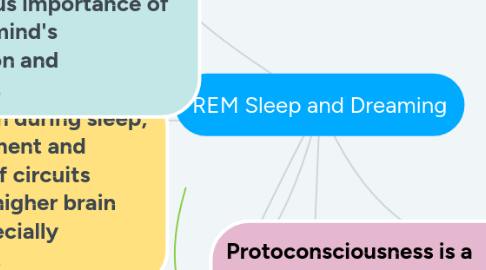REM Sleep and Dreaming
by Ryan Ellis

1. Works Cited: Hobson, J. Allan. (2009, November). REM sleep and dreaming: towards a theory of protoconsciousness. Retrieved from http://go.galegroup.com.ezp1r.riosalado.edu/ps/i.do?p=HRCA&u=mccweb_riosalado&id=GALE|A210920299&v=2.1&it=r&sid=summon&authCount=1
2. Rapid eye movement (REM) involves sleep with electroencephalographic evidence of brain activation, like waking, along with inhibition of muscle tone and involuntary saccadic eye movements. Dreams are most vivid and memorable during REM.
3. Brain activation during sleep, allow development and maintenance of circuits necessary for higher brain functions, especially consciousness.
4. REM sleep is vital to mental health. Sleep deprivation negatively affects our learning. Learning, especially memory, and language acquisition, grow over the lifespan. Dreams show the continuous importance of REM for the mind's reconstruction and maintenance.
5. Protoconsciousness is a primordial state of brain organization. Prototoconsciousness is a huge component of consciousness and contributes to brain development in REM sleep during childhood.
6. Humans need REM sleep dreaming to reach goals when they are awake. REM sleep is like a virtual reality. Dreams are reminders that we are protoconscious. Humans are fully themselves during dreams. People's senses and actions are felt vividly in an imaginary world of the brain's system of thoughts.


